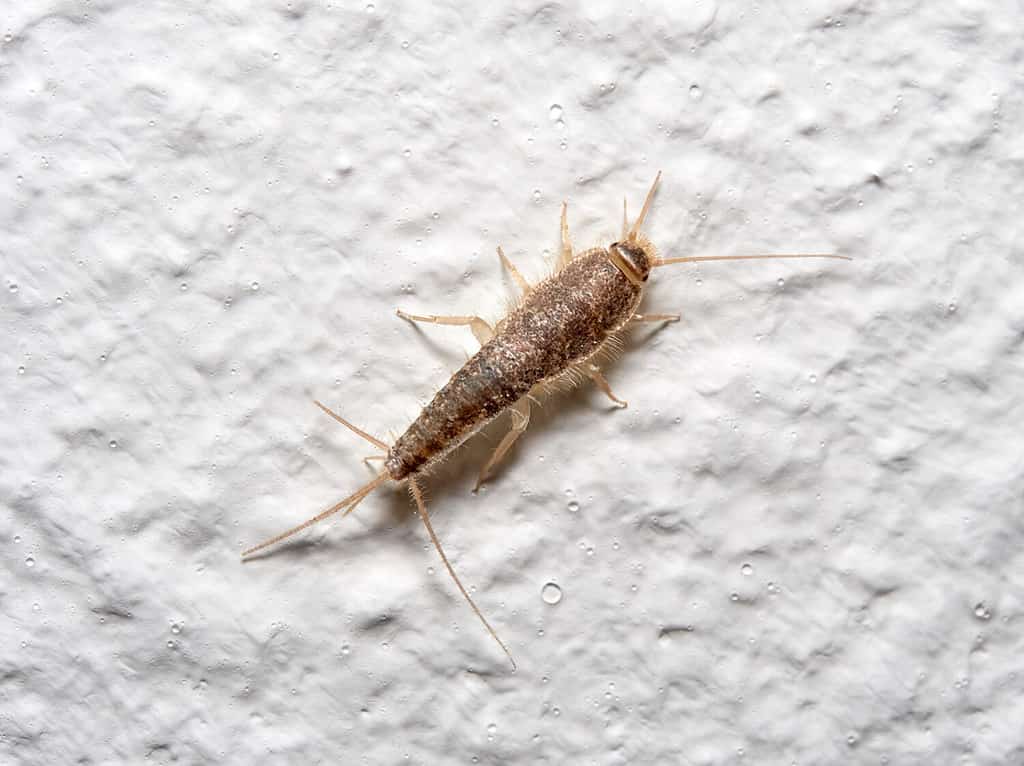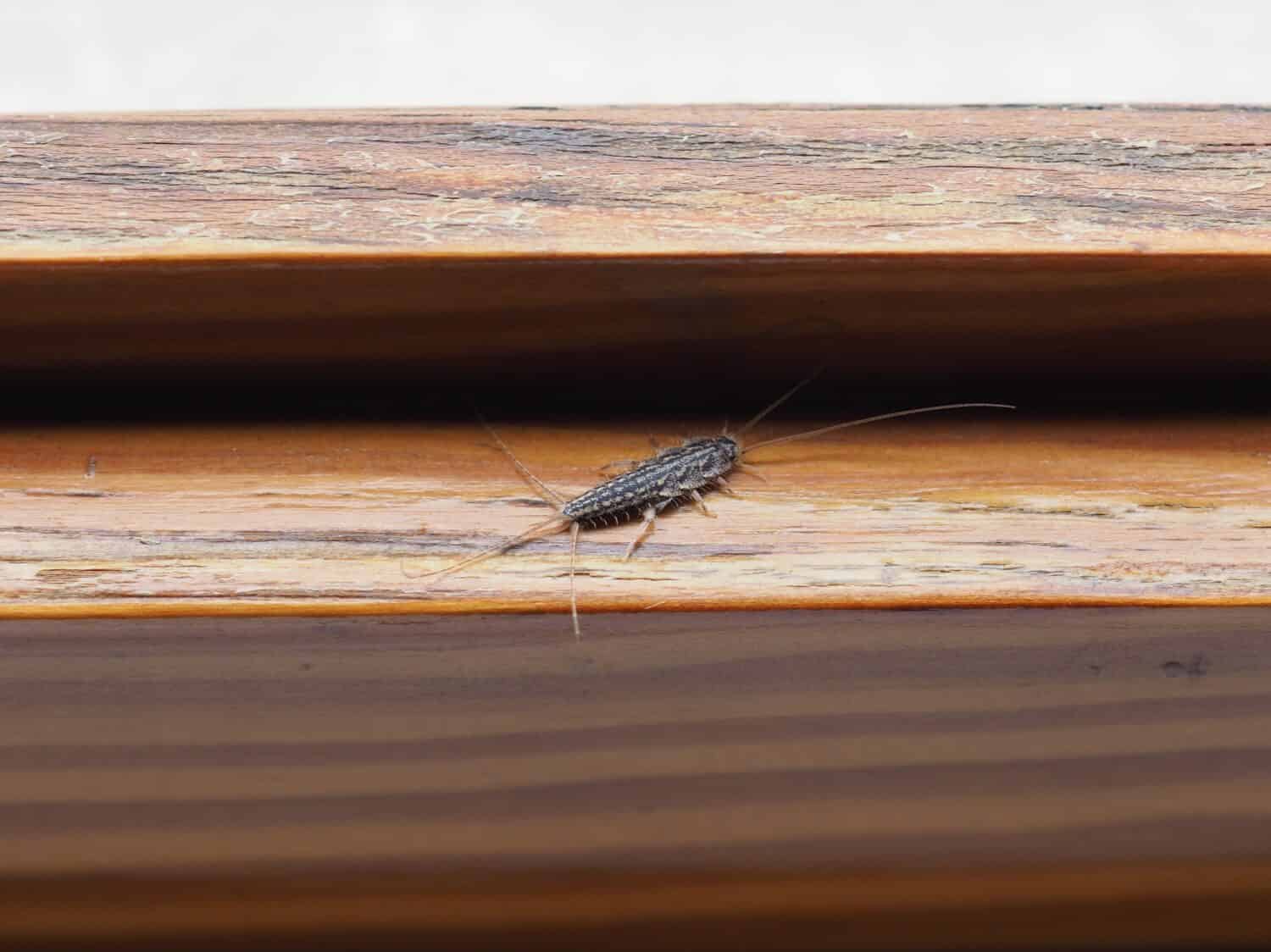Firebrats and silverfish are fairly common sights in the average household. They show up frequently in kitchens, bathrooms, and basements, and seem to love new construction. Their secretive nature and fast movements can make even the toughest homeowner uneasy.
These insects may have an unsettling appearance, but don’t worry — they won’t hurt you. They aren’t dangerous to the structure of your home, either. Although these insects can damage belongings, food, and decorative aspects of the home if they are present in great numbers, they are usually considered nuisance pests.
In this article, we’ll tell you how to distinguish between firebrats and silverfish. We’ll also talk about where they come from, how to keep them away, and why they might appear in your home to begin with.
What Is the Difference Between Silverfish and Firebrats?
Firebrats and silverfish look incredibly similar and people frequently mistake one for the other. Adults of both species are around the same size — about a half-inch in length. They both have six legs, carrot-shaped bodies, and three bristly filaments that extend from their rear ends. Neither species has wings. Both are nocturnal, feed on similar things, and move in similar ways. If they’re so similar, then, how do you tell them apart? Does it really matter?
Differentiating between a silverfish and a firebrat can be difficult, but is a useful skill to have. Knowing which insect you’re dealing with can help you figure out how to best address your problem. Because they are both attracted to excess moisture, the presence of one or both of these insects may also help you identify and address moisture problems in your house.
The key to the successful identification of these insects is to pay careful attention to a couple of things: coloration and location. We’ll talk more about this below.
Common Silverfish (Lepisma saccharinum)
Silverfish (Lepisma saccharinum) get their name from their distinctive silver or gray scales and their fast, wiggling patterns of movement. There are other species of silverfish, but these are the most commonly encountered. They prefer cool, moist environments and therefore appear most frequently in bathrooms, kitchens, and basements. Oftentimes, they climb into sink basins or bathtubs in pursuit of moisture from the drain and are unable to escape. When the lights turn on, they move frantically as they try to escape.
Surprisingly, silverfish can live up to eight years. They usually reproduce slowly over the course of their life, laying a few eggs at a time in dark cracks and crevices of the home. Behind baseboards, between framing members, and under cabinets are common breeding grounds. The eggs hatch after several weeks, releasing tiny silverfish nymphs that look like miniature versions of their parents. They begin their lives very small, only about a twentieth of an inch long, but grow to adult size over several months.

Silverfish get their name from the characteristic silvery-gray scales that cover their body. They hide in cool, moist crevices that are common in bathrooms, basements, and kitchens.
©Macronatura.es/Shutterstock.com
Common Firebrat (Thermobia domestica)
The firebrat (Thermobia domestica) is similar in size and shape to the common silverfish. However, the firebrat tends to be more stout overall and tapers less toward the rear. The coloration of the insect is one of the main identifiers. While the common silverfish is silvery-gray, the firebrat is quite a bit darker and has red-brown banding that alternates between its body segments.
Whereas the common silverfish likes cool, damp environments, the firebrat finds its niche on the other end of the spectrum. While it still needs high levels of moisture, it lives in hot environments instead. You’ll encounter firebrats most commonly around ovens, water heaters, furnaces, and laundry rooms. They also show up quite often in attics where a home’s rising heat and humidity tend to gather.
Firebrats reproduce more quickly than common silverfish. Beginning between 2 and 4 months of age, females will begin depositing clutches of around 50 eggs in warm, dark locations.

While they may look similar at a glance, firebrats have a less tapered body shape than silverfish. They also have a darker coloration and striped pattern.
©IamTK/Shutterstock.com
Why Are They in My Home? Are They Harmful?
Firebrats and silverfish often make it into the home in cardboard boxes, paper bags, or other objects that humans frequently tote around. They may also slip through cracks in doors and windows, behind siding, or along the structure’s foundation. Once they make it indoors where their needs are met, they tend to stay.
Both insects feed on the same thing: starch. They love chewing on paper, fabrics, glues, and grains. At night, they may scour your pantry for cereals, grains, and the boxes that hold them. They may nibble on old newspapers, magazines, or books on your bookshelf. Sometimes they’ll even eat wallpaper and the glue that binds it. While this may sound scary, it often takes a long period of time for any significant damage to occur.
If you live in a house that was built recently, you may be more likely to encounter these pests. The lumber that makes up the structure of your home is in constant flux throughout its useful life. At many points during shipment, transport to the jobsite, and the framing process, that lumber is usually exposed to rainwater. Once the walls and roof are finished, the frame can finally begin to dry out. As your house ages and settles in over the following months, the environment will be less likely to harbor firebrats or silverfish. If, after some time, they continue to appear, you may have a moisture problem that needs to be addressed.

If you live in new construction, you may encounter silverfish or firebrats more often. As the frame of your house dries and adjusts to the ambient humidity over time, these insects will likely become less frequent.
©ungvar/Shutterstock.com
How Do You Get Rid of Firebrats and Silverfish?
While some people may immediately reach for and apply pesticides along gaps, cracks, and crevices, doing so isn’t always necessary and only partially solves the problem. To best address an infestation, homeowners should instead try to uncover the reasons these insects are thriving in their homes to begin with.
The average home is a great source of moisture, food, and shelter — all of the things any animal needs to survive. You can limit the availability of these basic needs by doing some or all of the following:
- Keep kitchen surfaces and pantries clean. Store dry goods in containers with tight-fitting lids.
- Inspect attics for leaks and proper ventilation. If you notice a leak, call a roofer right away.
- Inspect crawlspaces for leaking plumbing, pooling water, and high humidity levels. You may need better ventilation. You can apply a vapor barrier to dirt-floored crawlspaces to minimize humidity coming from the soil.
- Inspect refrigerators, freezers and air conditioners for ice build-up and condensation. These can soak subflooring, baseboards, and framing members as they drip.
- Toilets, tubs, sinks, and water heaters may leak. Inspect your plumbing if you notice these insects in your bathroom.
- Seal gaps and cracks around tubs and sinks to prevent bathwater from escaping into the framing beneath.
- If possible, pull out ovens, clothes washers, and driers periodically to clean behind them and ensure the spaces are dry.
- Apply desiccating agents, like a dusting of diatomaceous earth, to the edges of problem rooms, beneath furniture, and behind baseboards. This will help dry out the space and the pest insects as they pass over the dust.
Both species of insects are very sensitive to changes in temperature and humidity. They require environments that are stable between 70 and 90 percent relative humidity and survival rates drop with the moisture level of the environment. Promoting air flow, addressing leaks and seepage, and drying out damp areas go a long way in getting rid of these insects. Doing these things in combination with pesticides or dessiccating agents will help keep pesky silverfish and firebrats in check.
Always be careful when using pesticides and follow the instructions on the label carefully. If you know or suspect that you have a large infestation on your hands, don’t be afraid to enlist the help of a professional. The right tools and a wealth of experience can make all the difference.
Thank you for reading! Have some feedback for us? Contact the AZ Animals editorial team.








